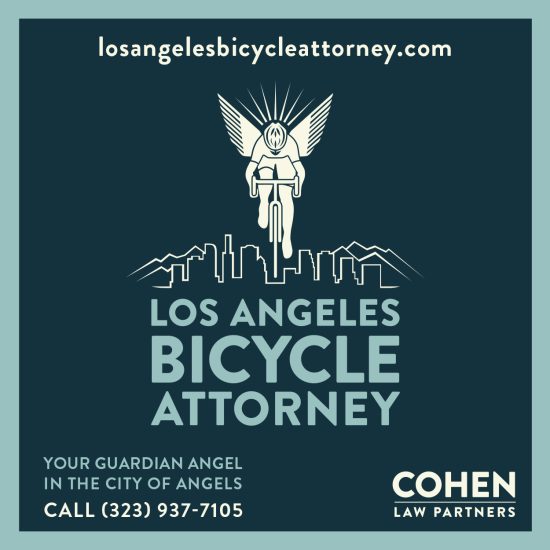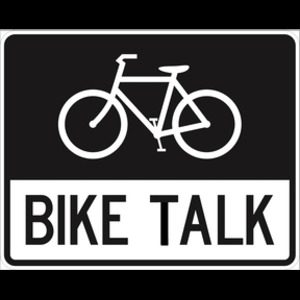
Day 101 of LA’s Vision Zero failure to end traffic deaths by 2025.
………
And so it begins.
After speculating yesterday that officials were virtually daring someone to file suit alleging Metro’s Vermont Avenue bus rapid transit project is violating Measure HLA, someone did.
Longtime bike advocate and Streetsblog Los Angeles editor Joe Linton filed a lawsuit against the City of Los Angeles alleging that the city failed to implement the safety improvements included in the mobility plan, as required by the Healthy Streets LA ordinance passed overwhelmingly by voters last year.
According to a statement Linton provided to Streetsblog,
I live very close to Vermont Avenue, where my family and I walk, bike, and/or take transit nearly every day. Since 2014, I have attended meetings focused on Vermont transit improvements, where I and many other advocates have pressed for complete streets, including bike lanes that have long been part of the city’s plans for Vermont. I was, and still am, excited that L.A. City voters approved Measure HLA, which requires the city to gradually implement its plan for a more transit-friendly, more walkable, and more bikeable Vermont.
In researching my Streetsblog coverage of Measure HLA and the Vermont Transit Corridor project, I became frustrated encountering repeated instances where the city continues to ignore its own plans for a safe and truly multimodal Vermont.
Linton goes on to say he’s not looking for any personal gain, other than recouping his attorney fees.
Rather, he hopes the lawsuit will result in a settlement that will deliver long-delayed safety improvements that will “save lives, foster public health, stem climate-harming emissions, and improve the quality of life for Vermont Avenue’s pedestrians, bus riders, and bicyclists.”
Linton is represented by a pair of attorneys who should be well-known in the Los Angeles area, former state Assemblymember Mike Gatto and longtime Bicycle Advisory Committee member Jonathan Weiss.
Which suggest LA City Attorney Hydee Feldstein Soto will have her hands full trying to defend Los Angeles in this matter.
Lord knows I wouldn’t want to go up against either one of them. Let alone both.
You can read the full text of the lawsuit here.
Something tells me it won’t be the last.
Photo by Sora Shimazaki from Pexels.
………
A writer for the New York Times Magazine makes the case for more sprawl as the answer to America’s crippling housing shortage.
No, seriously.
According to Conor Dougherty, author of Golden Gates: The Housing Crisis and a Reckoning for the American Dream,
The solution is to build more. That’s not controversial — housing is one of the few remaining areas of bipartisan agreement. The rub, as always, is where and how to get it done. Over the past decade, dozens of cities and states have tried to spur construction by passing laws that aim to make neighborhoods denser: removing single-family zoning rules, reducing permitting times and exempting housing in established neighborhoods from environmental rules.
That shift is important, especially in cities like San Francisco and Los Angeles that have little chance of lowering housing costs or reducing their homeless populations without building up. But cities are difficult and expensive places to build because they lack open land. Adding density to already-bustling places is crucial for keeping up with demand and preventing the housing crisis from getting worse. It will not, however, add the millions of new units America needs. The only way to do that is to move out — in other words, to sprawl.
He goes on to examine what has limited growth over the last several decades, from anti-sprawl legislation and stringent zoning requirements, to the pervasive effects of NIMBYism.
Even if all the regulatory restraints were removed tomorrow, developers couldn’t find enough land to satisfy America’s housing needs inside established areas. Consequently, much of the nation’s housing growth has moved to states in the South and Southwest, where a surplus of open land and willingness to sprawl has turned the Sun Belt into a kind of national sponge that sops up housing demand from higher-cost cities. The largest metro areas there have about 20 percent of the nation’s population, but over the past five years they have built 42 percent of the nation’s new single-family homes, according to a recent report by Cullum Clark, an economist at the George W. Bush Institute, a research center in Dallas.
Admittedly, Dougherty makes a strong case.
But what he fails to consider is the concomitant problems of endless sprawl, as we in SoCal know so well, from crushing traffic congestion and smog to declining inner cities and the ever-rising casualties from traffic violence.
Not to mention living, not miles, but hours from the services you rely on, such as healthcare and courts, and continuing to mandate car dependency while killing walkability and bikeability.
Yes, we desperately need more housing. A lot more.
But we need to build it in places and ways that don’t exacerbate all the other problems that destroy our quality of life at the same time.
………
No surprise here.
According to LAist, elections for LA’s Neighborhood Councils are seeing their lowest voter turnout in years.
Part of the problem, aside from the difficulty of casting a ballot, is an almost total lack of local news coverage in today’s Los Angeles, resulting in a large segment of the population who have no idea what Neighborhood Council district they’re in, or that they even exist in the first place.
The other problem is that for every NC like Mid-City West or North Westwood council that’s responsive to and representative of the local community, you have too many overly dominated by one or two strong personalities, or NIMBYs who just say no to everything.
They should be a place we can go to address city problems on a micro, rather than macro, level, and trust those concerns will be heard and acted on. Especially in a city with far too few council districts, where every councilmember represents more than a quarter million people.
Mayor Bass is reportedly considering ways to reform, reinvigorate or replace the Neighborhood Council system.
But while change is needed, I’m not sure she’s earned the trust to lead this process anymore.
………
The war on cars may be a myth, but the war on bikes just keeps going on.
No bias here. A London tabloid says “fuming Brits” have initiated a petition demanding numbered license plates and liability insurance for all bike riders. Even though the last petition demanding the same thing died for lack of interest.
………
Local
West Hollywood approved a proposal to study the feasibility of installing Class IV protected bike lanes on Beverly Blvd, although without any changes to the current lane design, which would seemingly hamstring the project.
State
Calbike examines the 14 ebike bills currently under consideration in the state legislature, including efforts to redefine some ebikes to clean up the blurred lines between electric bicycles and e-motorbikes, which we’ve been calling for here.
The California Coastal Commission approved plans for a bike path connecting Cayucos and Morro Bay along Highway 1 in San Luis Obispo County, filling a gap in the 1,200-mile California Coastal Trail.
Yesterday marked the first day of the four-day Sea Otter Classic, as more than a thousand bike industry brands showed off their wares at the Laguna Seca racetrack
Palo Alto is in the process of updating its 2012 bike plan, including opening up more of the city’s major roadways by installing protected bike lanes.
The San Francisco Bicycle Coalition is understandably protesting plans to allow driverless Waymo autonomous cars on the city’s currently carfree and pedestrianized Market Street. After all, what could possibly go wrong?
National
Forbes offers advice on how to stay safe on your next ebiking vacation.
A Grand Junction, Colorado writer examines the push for better bike and pedestrian infrastructure, after voters elected a full slate of city council candidates opposed to a new protected bike lane.
Is nothing sacred? Someone stole a $450 bicycle from a Kroger Coca-Cola display promoting Indiana University’s iconic Little 500.
Madonna is one of us, bundling up for a cold-weather ride through New York’s Central Park.
South Carolina bicyclists protested plans for a new luxury hotel in an area they say is “just a heaven for cycling,” fearing it could harm their safety on the road.
Urbanize questions whether Atlanta is worthy of the new Atlamsterdam moniker, saying it’s not as bike-friendly as the city in the Netherlands, but getting closer. On the other hand, as a nickname, it kinda sucks.
International
Momentum offers ten ways bicycles deliver the freedom cars only promise. Although I would swear we’ve seen this one before.
A writer for Cycling Weekly says he’s already lost over four pounds and his head feels clearer just a month into exploring sober curiosity. I’m a week into involuntary sobriety myself, thanks to a new medication that’s incompatible with my occasional beer.
The Surfrider Foundation is protesting plans to build a two-mile paved bike path along the Puerto Rican coast, arguing it’s being built too close to the shore and fails to adopt a nature-based approach, fearing it could both destroy and be destroyed by the waves.
An English rugby player is biking 220 miles from his home stadium in Batley to London to raise funds to upgrade the stadium’s floodlights, after he was banned for eight matches for his role in a mass brawl. But isn’t mass brawling the whole point of rugby?
Yet another study, this time from Finland, shows that bike commuting is still the smartest and healthiest way to get to work.
Three young men captured the attention of South Africans by riding their bikes the 1,100 miles from Limpopo to Cape Town.
A new Australian study warns of the dangers of hidden bike flaws that can lead to catastrophic failure of frames or key parts, suggesting changes need to be made at an industry-wide level.
Competitive Cycling
Look, I like American cyclist Sepp Kuss as much as anyone outside his own circle of family and friends, but is taking part in an early Basque Country breakaway that ultimately fizzled out really something to celebrate?
On the other hand, Portuguese cyclist João Almeida’s solo breakaway win in the same race is something to celebrate.
Finally….
The next time you ride your bike across the border, maybe leave the half-pound of meth and fentanyl hidden in the frame at home. Your next bike could double as a sex toy.
And your next golden raincoat could be made four of waterproof copper.
Yes, there’s a golden opportunity for a sex joke there. And no, I’m not going to make it.
………
Be safe, and stay healthy. And get vaccinated, already.
Oh, and fuck Putin.





